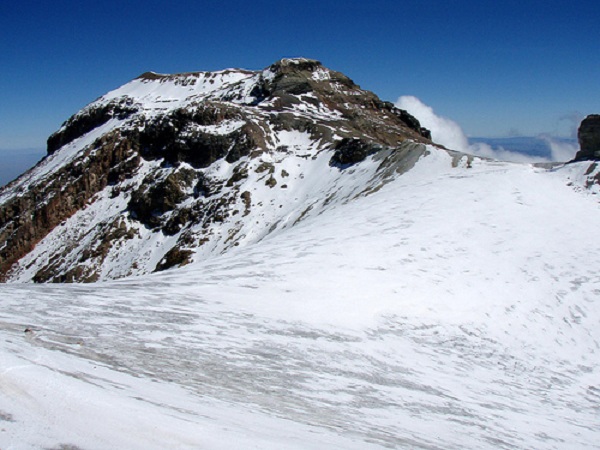
Tropical glaciers are the major source of fresh water and habitat of many rare species of flora and fauna on the earth. Studies have found that they are melting fast and their condition also reflects the rapid rise in air temperature in the tropical region that is home to largest number of people in the world. While there may not be agreement among the pundits over the exact reasons that are causing the meltdown, or the retreat, of mighty glaciers, but none can confirm that glaciers are not melting.
In fact, some glaciologists say that many glaciers have been retreating irreversibly since 1820 and are now on the verge of extinction even as they play a vital role in the local ecosystem. Here we have listed five such glaciers.
1. Qori Kalis glacier in the Peruvian Andes
Qori kalis is the world’s largest tropical glacier located on the Quelccaya ice cap in Andes mountain range in Peru. This ice cap spread in 44 sq.km area is shrinking as its biggest glacier Qori Kalis has retreated by about 1.1 km since 1963. Glaciologists from the Ohio state university recently claimed that this glacier could loss all its mass in a five year time at the rate at which is retreating now. Also, they noted that nothing can be done from the human side for stopping the retreat of Qori kalis.
2. Glaciers of the Rwenzori Range, Uganda and DRC, Africa
The glaciers of Rwenzori Range is spread over the borders of Uganda and the Democratic Republic of Congo (DRC) in Africa. It is just one of the four tropical ice field that is located outside the Andes. However, studies have shown it could become extinct in next two decades and badly affect the rare species of the region in long run. A report published in Geophysical research Letters had said in 2006 that increasing air temperature â about 0.5 degree Celsius per decade – over the last four decades have contributed much to the meltdown of this tropical glacier.
3. Glaciers at IztaccÃhuatl, Mexico
Scientists believe that this glacier would also not last for more that 20-30 years. They say that this is because of the rampant rise in air temperature mostly because of the use of fossil fuels. It is located on the tallest mountains of Mexico and has been source of many legends for the local population. In one such legend, people of the Aztec civilization likened it with a veiled princess who died of sorrow after her lover died in a battle. The retreat of this glacier would badly affect the the farmers and many cities of Latin America as water availability will be reduced and also the hydro-power generation will be affected.
4. Chacaltaya Glacier, Bolivia
The Chacaltaya glacier is also one of the many glacier located in the Andes in Peru, which is home to 70 percent of the world’s total glaciers. It has been a major source of fresh water for drinking and farming for ages but its rapid retreat has left the local population of Bolivia worried as now they would have to depend mostly on rain which is not regular and forcing people to change their lifestyle.
5. Glaciers Of Mount Kilimanjaro, Tanzania, Africa
The glaciers of Africa’s highest Mount Kilimanjaro mountains in Tanzania could be all but extinct in next two decades because of the rise in global temperature, according to a survey published in the Proceedings of the National Academy of Sciences. It also noted that the retreat could also be caused partially by change in cloudiness and precipitation because it is not just the margin of the glaciers that is shrinking but also they are getting thinner from the top surface. The survey found that 85 percent of the total ice cover over this mountain was lost between 1912-2007.


